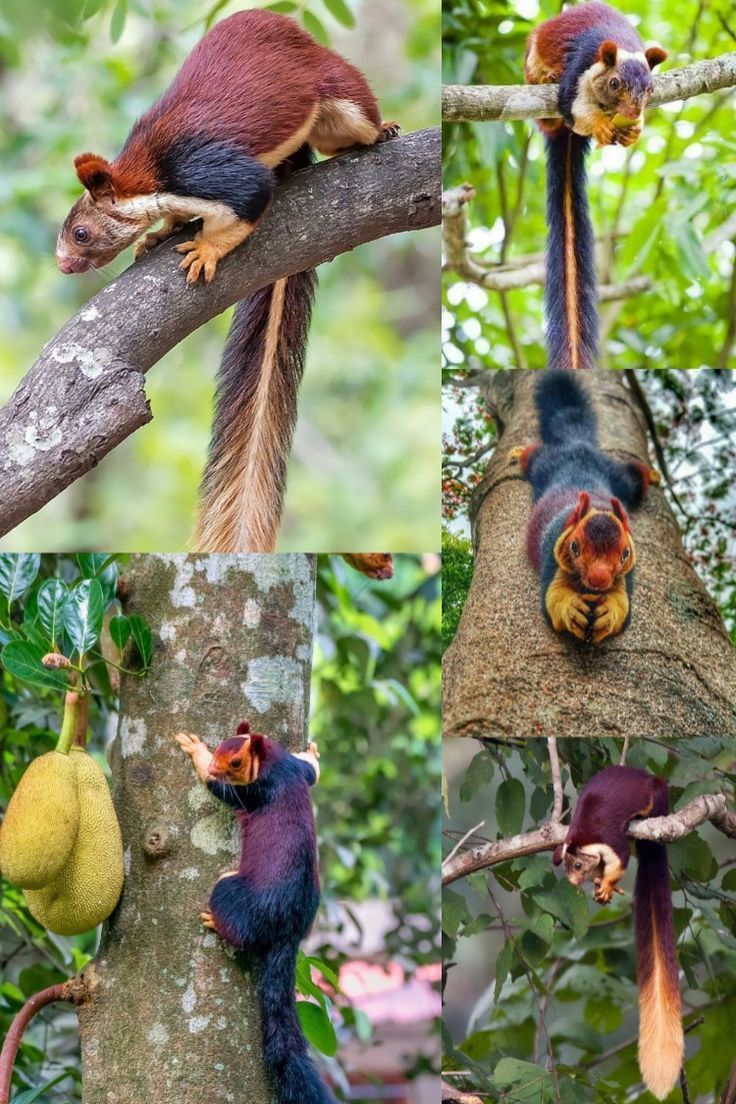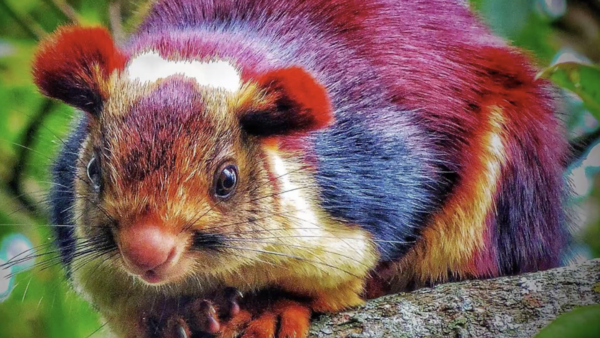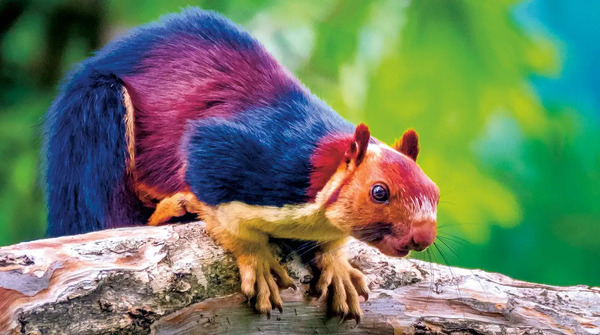The Indian giant squirrel (Ratufa indica), also known as the Malabar giant squirrel, is one of the most fascinating creatures endemic to India. As one of the largest squirrel species in the world, this majestic animal stands out with its striking multi-colored coat, remarkable size, and unique behavioral traits. In this article, we'll dive deep into the scientific classification, physical characteristics, habitat, behavior, diet, reproduction, and conservation status of this incredible species. Whether you're an avid wildlife enthusiast or just discovering the Indian giant squirrel, this detailed guide will provide you with comprehensive knowledge about this remarkable mammal.
The Indian giant squirrel belongs to the Kingdom Animalia and the Phylum Chordata, placing it within the broader group of mammals. Here’s a breakdown of its scientific classification:
Domain: Eukaryota
Kingdom: Animalia
Phylum: Chordata
Class: Mammalia
Order: Rodentia
Family: Sciuridae
Genus: Ratufa
Species: R. indica
This species has several subspecies based on regional differences in size, color, and tail characteristics. These subspecies include R. i. indica, R. i. centralis, R. i. dealbata, and R. i. maxima, each of which can be found in different parts of India.

The Indian giant squirrel is renowned for its size and striking appearance. It is one of the largest squirrel species in the world, with adults reaching an impressive head-to-body length of 25–50 cm (10–20 inches) and a tail length that is often equal to or slightly longer than the body. The weight of an adult squirrel typically ranges from 1.5 to 2 kg (3.3 to 4.4 lbs), although some individuals can weigh as much as 3 kg (6.6 lbs).
The squirrel's coat is multi-toned, with color patterns that vary across subspecies. It generally has a cream-colored underside and front legs, with a distinctive white spot between the ears. The color scheme ranges from reddish-maroon, rust, and tan to darker shades of brown and black, depending on the subspecies.
Its large bushy tail often features a pale tip, and the squirrel's overall color helps it blend into the tree canopies where it resides. This coloration is not just for camouflage but also plays a role in mating displays.
The Indian giant squirrel is endemic to India and is found primarily in the forests of the Western Ghats, Eastern Ghats, and Satpura Range. These areas provide the dense canopies and tall trees that the squirrel requires for nesting and foraging. The species is typically found at altitudes ranging from 180 to 2,300 meters (590 to 7,550 feet), in tropical deciduous, semi-deciduous, and moist evergreen forests.
Because the species is intolerant of habitat degradation, its distribution is somewhat fragmented. The Indian giant squirrel requires tall, densely branched trees for nesting, often choosing trees that are over 11 meters (36 feet) tall to avoid predators.
The Indian giant squirrel is diurnal, which means it is active during the day. It spends most of its time in the upper canopy of the forest, rarely descending to the ground. These squirrels are solitary, coming together only for mating purposes. They tend to avoid interaction with others unless necessary, and when threatened, they often freeze or flatten themselves against tree trunks rather than fleeing.
The Indian giant squirrel is primarily herbivorous, feeding on a variety of plant-based materials. Its diet includes fruits, flowers, nuts, and tree bark. The squirrel may also consume insects and bird eggs, making it somewhat omnivorous at times. The squirrel plays a crucial role in seed dispersal, helping to maintain the health of its ecosystem.

In the wild, Indian giant squirrels give birth to one or two offspring after a gestation period of around 90 days. These young squirrels are typically born in the dry season, between March and April. At birth, they weigh about 74.5 grams (2.6 oz) and have a body length of around 27.3 cm (10.7 inches).
Nests are typically built in smaller trees and are made of twigs, leaves, and other natural materials. The squirrel will often create multiple nests, using one as a nursery and others for sleeping.
The Indian giant squirrel is currently listed as Least Concern on the IUCN Red List, meaning that it is not immediately at risk of extinction. However, its habitat is increasingly threatened by deforestation, land-use changes, and habitat fragmentation. These factors can have significant effects on the species' long-term survival, particularly as it is sensitive to disturbances in its environment.
The main predators of the Indian giant squirrel include birds of prey (like owls) and large carnivores such as the leopard. Habitat loss due to logging, agriculture, and urbanization is a critical concern. Additionally, the squirrel's reliance on specific types of trees for nesting means that destruction of these habitats could lead to population declines.
Efforts to conserve the Indian giant squirrel include protecting its natural habitats, enforcing anti-poaching laws, and preserving forest corridors that allow the squirrel to travel between fragmented habitats. Additionally, awareness programs aimed at educating local communities about the importance of preserving wildlife habitats are essential.
The Indian giant squirrel plays a vital role in its ecosystem as a seed disperser. By feeding on various fruits and nuts, it helps in the propagation of numerous plant species, contributing to the health and regeneration of its forest habitat. As part of the upper canopy food chain, it also provides food for predators like birds of prey and carnivorous mammals.
In Indian culture, the Indian giant squirrel is a symbol of the rich biodiversity found in the country’s forests. The species is the state animal of Maharashtra and is considered an important part of the natural heritage. Although not directly associated with major economic activities, the Indian giant squirrel is an indicator of forest health and serves as an important focus for eco-tourism, wildlife photography, and educational campaigns.

While the Indian giant squirrel is currently classified as Least Concern, its future remains intertwined with the health of the forests in India. Conservation efforts aimed at protecting habitats, reducing deforestation, and promoting sustainable forest management will be key to ensuring this remarkable species continues to thrive in the wild. As a unique and vital part of India’s natural heritage, the Indian giant squirrel deserves our attention and protection.
By learning more about its biology, ecology, and the threats it faces, we can take steps to support its conservation and ensure that future generations will be able to admire this magnificent creature in the wild.
animal tags: Sciuridae
We created this article in conjunction with AI technology, then made sure it was fact-checked and edited by a Animals Top editor.